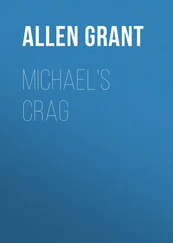Grant Allen - Paris. Grant Allen's Historical Guides
Здесь есть возможность читать онлайн «Grant Allen - Paris. Grant Allen's Historical Guides» — ознакомительный отрывок электронной книги совершенно бесплатно, а после прочтения отрывка купить полную версию. В некоторых случаях можно слушать аудио, скачать через торрент в формате fb2 и присутствует краткое содержание. ISBN: , Издательство: Иностранный паблик, Жанр: foreign_language, foreign_prose, на английском языке. Описание произведения, (предисловие) а так же отзывы посетителей доступны на портале библиотеки ЛибКат.
- Название:Paris. Grant Allen's Historical Guides
- Автор:
- Издательство:Иностранный паблик
- Жанр:
- Год:неизвестен
- ISBN:http://www.gutenberg.org/ebooks/49907
- Рейтинг книги:4 / 5. Голосов: 1
-
Избранное:Добавить в избранное
- Отзывы:
-
Ваша оценка:
- 80
- 1
- 2
- 3
- 4
- 5
Paris. Grant Allen's Historical Guides: краткое содержание, описание и аннотация
Предлагаем к чтению аннотацию, описание, краткое содержание или предисловие (зависит от того, что написал сам автор книги «Paris. Grant Allen's Historical Guides»). Если вы не нашли необходимую информацию о книге — напишите в комментариях, мы постараемся отыскать её.
Paris. Grant Allen's Historical Guides — читать онлайн ознакомительный отрывок
Ниже представлен текст книги, разбитый по страницам. Система сохранения места последней прочитанной страницы, позволяет с удобством читать онлайн бесплатно книгу «Paris. Grant Allen's Historical Guides», без необходимости каждый раз заново искать на чём Вы остановились. Поставьте закладку, и сможете в любой момент перейти на страницу, на которой закончили чтение.
Интервал:
Закладка:
At least two daysshould be devoted to the Île de la Cité; one to the Palace and the Sainte Chapelle, another to the Cathedral. Do not attempt to see them both together.]
A. THE PALAIS DE JUSTICE AND THE SAINTE CHAPELLE
Go along the Rue de Rivoli as far as the Square of the Tour St. Jacques. If driving, alight here. Turn down the Place du Châtelet to your right. In front is the pretty modern fountain of the Châtelet: right, the Théâtre du Châtelet; left, the Opéra Comique. The bridge which faces you is the Pont-au-Change, so-called from the money-changers’ and jewellers’ booths which once flanked its wooden predecessor (the oldest in Paris), as they still do the Rialto at Venice, and the Ponte Vecchio at Florence.
Stand by the right-hand corner of the bridge before crossing it. In front is the Île de la Cité. The square, dome-crowned building opposite you to the left is the modern Tribunal de Commerce; beyond it leftward lie the Marché-aux-Fleurs and the long line of the Hôtel-Dieu, above which rise the towers and spire of Notre-Dame. In front, to the right, the vast block of buildings broken by towers forms part of the Palais de Justice, the ancient Palace of the French kings, begun by Hugues Capet. The square tower to the left in this block is the Tour de l’Horloge. Next, to the right, come the two round towers of the Conciergerie, known respectively as the Tour de César and the Tour de Montgomery. The one beyond them, with battlements, is the Tour d’Argent. It was in the Conciergerie that Marie Antoinette, Robespierre, and many other victims of the Revolution were imprisoned.
These mediæval towers, much altered and modernized, are now almost all that remains of the old Palace, which, till after the reign of Louis IX (St. Louis), formed the residence of the Kings of France. Charles VII gave it in 1431 to the Parlement or Supreme Court. Ruined by fires and rebuilding, it now consists for the most part of masses of irregular recent edifices. The main modern façade fronts the Boulevard du Palais.
Cross the bridge. The Tour de l’Horloge on your right, at the corner of the Boulevard du Palais, contains the oldest public clock in France (1370). The figures of Justice and Piety by its side were originally designed by Germain Pilon, but are now replaced by copies. Walk round the Palais by the quay along the north branch of the Seine till you come to the Rue de Harlay. Turn there to your left, towards the handsome and imposing modern façade of this side of the Palais de Justice. The interior is unworthy a visit. The Rue de Harlay forms the westernmost end of the original Île de la Cité. The prow-shaped extremity of the modern island has been artificially produced by embanking the sites of two or three minor islets. The Place Dauphine, which occupies the greater part of this modern extension, was built in 1608; it still affords a characteristic example of the domestic Paris of the period before Baron Haussmann. Continue along the quay as far as the Pont-Neuf, so as to gain an idea of the extent of the Île de la Cité in this direction. The centre of the Pont-Neuf is occupied by an equestrian statue of Henri IV, first of the Bourbon kings. Its predecessor was erected in 1635, and was destroyed to make cannon during the great Revolution. Louis XVIII re-erected it. From this point you can gain a clear idea of the two branches of the Seine as they unite at the lower end of the Île de la Cité. To your right, looking westward, you also obtain a fine view of the Colonnade of the Old Louvre, with the southwestern gallery, and the more modern buildings of the Museum behind it. (See later.)
Now, walk along the southern quay of the island, round the remainder of the Palais de Justice, as far as the Boulevard du Palais. There turn to your left, and go in at the first door of the Palace on the left (undeterred by sentries) into the court of the Sainte Chapelle, the only important relic now remaining of the home of Saint Louis. You may safely neglect the remainder of the building.
[The thirteenth century (age of the Crusades) was a period of profound religious enthusiasm throughout Europe. Conspicuous among its devout soldiers was Louis IX, afterwards canonized as St. Louis. The saintly king purchased from Baldwin, Emperor of Constantinople, the veritable Crown of Thorns, and a fragment of the True Cross– paying for these relics an immense sum of money. Having become possessed of such invaluable and sacred objects, Louis desired to have them housed with suitable magnificence. He therefore entrusted one Pierre de Montereau with the task of building a splendid chapel (within the precincts of his palace), begun in 1245, and finished three years later, immediately after which the king set out on his Crusade. The monument thus breathes throughout the ecstatic piety of the mystic king; it was consecrated in 1248, in the name of the Holy Crown and the Holy Cross, by Eudes de Châteauroux, Bishop of Tusculum and papal legate.
Three things should be noted about the Sainte Chapelle. (1) It is a chapel, not a church; therefore it consists (practically) of a choir alone, without nave or transepts. (2) It is the domestic Chapel of the Royal Palace. (3) It is, above all things, the Shrine of the Crown of Thorns. These three points must be constantly borne in mind in examining the building.
Erected later than Notre-Dame, it represents the pointed style of the middle of the thirteenth century, and is singularly pure and uniform throughout. Secularized at the Revolution, it fell somewhat into decay; but was judiciously restored by Viollet-le-Duc and others. The “Messe Rouge,” or “Messe du St. Esprit,” is still celebrated here once yearly, on the re-opening of the courts after the autumn vacation, but no other religious services take place in the building. The Crown of Thorns and the piece of the True Cross are now preserved in the Treasury at Notre-Dame.
Open daily, free, except Mondays, 11 to 4 or 5. Choose a very bright dayto visit it.]
Examine the exteriorin detail from the court on the south side. More even than most Gothic buildings, the Sainte Chapelle is supported entirely by its massive piers, the wall being merely used for enclosure, and consisting for the most part of lofty windows. As in most French Gothic buildings, the choir terminates in a round apse, whereas English cathedrals have usually a square end. The beautiful light flècheor spire in the centre has been restored. Observe the graceful leaden angel, holding a cross, on the summit of the chevet or round apse. To see the façade, stand well back opposite it, when you can observe that the chapel is built in four main stories, – those, namely, of the Lower Church or crypt, of the Upper Church, of the great rose window (with later flamboyant tracery), and of the gable-end, partially masked by an open parapet studded with the royal fleurs-de-lis of France. The Crown of Thorns surrounds the two pinnacles which flank the fourth story.
The chapel consists of a lower and an upper church. The Lower Churchis a mere crypt, which was employed for the servants of the royal family. Its portal has in its tympanum (or triangular space in the summit of the arch) the Coronation of the Virgin, and on its centre pillar a good figure of the Madonna and Child. Enter the Lower Church. It is low, and has pillars supporting the floor above. In the polychromatic decoration of the walls and pillars, notice the frequent repetition of the royal lilies of France, combined with the three castles of Castille, in honour of Blanche of Castille, the mother of St. Louis.
Читать дальшеИнтервал:
Закладка:
Похожие книги на «Paris. Grant Allen's Historical Guides»
Представляем Вашему вниманию похожие книги на «Paris. Grant Allen's Historical Guides» списком для выбора. Мы отобрали схожую по названию и смыслу литературу в надежде предоставить читателям больше вариантов отыскать новые, интересные, ещё непрочитанные произведения.
Обсуждение, отзывы о книге «Paris. Grant Allen's Historical Guides» и просто собственные мнения читателей. Оставьте ваши комментарии, напишите, что Вы думаете о произведении, его смысле или главных героях. Укажите что конкретно понравилось, а что нет, и почему Вы так считаете.












